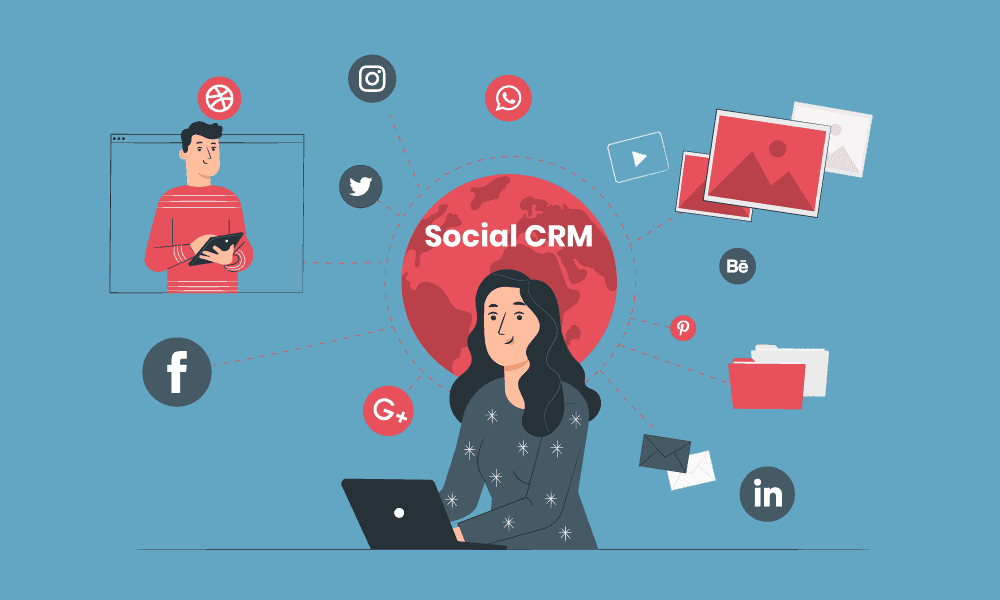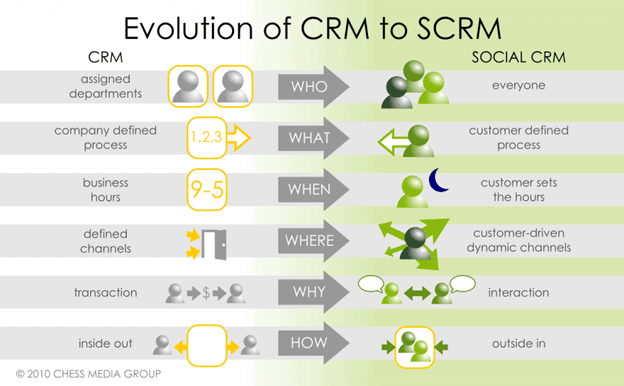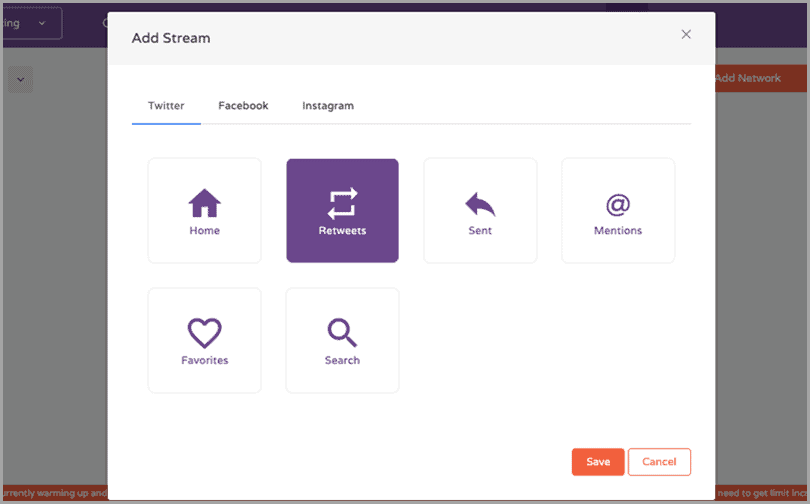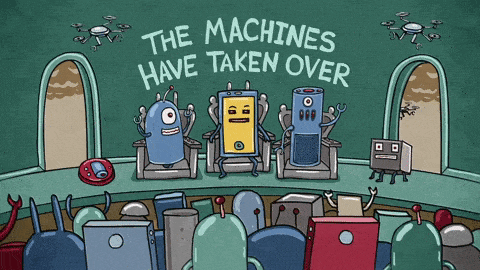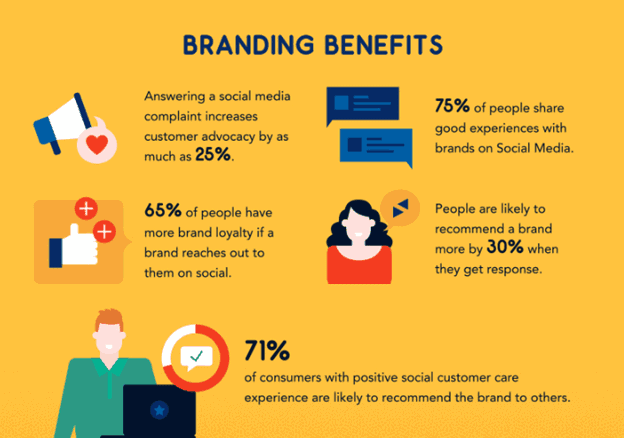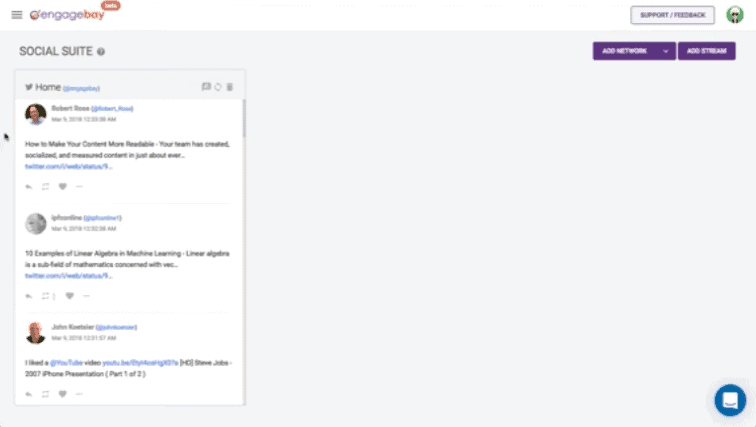Today, social media has become an integral part of our daily lives.
Very few of us can go more than a few hours without checking our Instagram, Twitter, or Facebook feeds. By using social customer relationship management or CRM, you can harness the power of social media for your small business.
If you’re not familiar with social CRM, you’ve come to the right place. In this article, we’ll cover the concept in depth. We’ll even share our best social CRM case studies for you to review and maybe replicate for your business.
Table of Contents
What Is Social CRM?
Before we can explain why your company needs this form of CRM, we should begin with a social CRM definition.
Social CRM or SCRM is a branch of customer relationship management software. While you may still use traditional CRM, you also mix in social media metrics gained from platforms like Facebook and Twitter.
The following image illustrates shows how social CRM is different from traditional CRM in which of the following ways?
Image courtesy of GetCRM
As the graphic shows, CRM often only uses assigned departments while SCRM doesn’t limit its audience base as much.
While traditional CRM might have a more defined set of rules that the company comes up with, SCRM relies on its customers for those same rules.
Customers even choose the hours, so there’s no predefined nine-to-five here. It’s all about what the customer wants and needs most with SCRM.
CRM relies on more defined channels, but SCRM does not. Instead of always pushing customers to buy, buy, buy, SCRM software and marketing aims for more interaction and communication from the audience, as well as social listening.
Many view this as an “outside-in” process rather than one that’s “inside-out,” as traditional CRM is.
Why not check out EngageBay’s social features courtesy of this introductory YouTube video?
What Does Social CRM Do?
What can your small business hope to achieve with SCRM? All sorts of things, so let’s get into those now.
Integration with Social Media
Managing your social media accounts has become a job in and of itself these days.
With SCRM, you can bring most of your everyday sales and social tasks together on a centralized platform. For instance, you might be able to integrate your calendar, contact management, and sales pipeline all in one place.
How handy!
Integrate your social channels all in one place.
Customer Service
Few people today would rather pick up the phone and call when they can reach out to your company some other way.
Rather than wait for an email reply, customers can get an instant answer when they message you or you comment on your social media.
SCRM allows you to identify these complaints, comments, or questions as soon as they appear. You can then get a quick jump on the problem, ameliorating it before the customer’s dissatisfaction grows.
Besides that, SCRM can also track the history of such interactions with your customers. The next time you chat with that customer, you’ll know what some of their pain points are.
Social Analytics
Social media does not have to be an untamable jungle. Get a hold on how your posts perform with social analytics through your SCRM.
These KPIs can inform future sales and marketing campaigns so these go off without a hitch.
Social Listening
You can’t possibly track every last mention of your small business across social media. Still, it’s important to know this information, so what should you do?
Use social CRM, of course.
Your SCRM tool of choice can keep its figurative ears open to track all those brand mentions, good or bad. From the people following you to the hashtags they use and what they’re saying, you’ll know it all. Fuller, More Comprehensive Customer Views.
Your SCRM can also gather all the profiles of your customers in one place, so if they’re on 10 social media platforms, you’re aware of it.
Combining that with the interactions log, which tracks both indirect and direct conversations, and you get a completely comprehensive customer view.
What are the Components of Social CRM
As you begin using social media CRM tool or at least researching one to use, you’ll come across several unique components of SCRM.
Let’s talk more about these components now.
Sentiment Analysis
When you express a sentiment in a conversation, it’s either positive or negative.
Having sentiments is part of the human condition, as it allows us to share our thoughts and emotions with others.
Social media customer relationship management encompasses the entirety of the customer experience, including a person’s satisfaction or dissatisfaction.
How does a company even begin to figure out their customers’ sentiments?
Social CRM software can show its mettle with sentiment analysis.
Using SCRM, you can do the above combing without having to put much human effort towards the job.
With sentiment analysis, SCRM software will look through documents, phrases, and words that come up from your customers. If these phrases or words have polarizing connotations, that gets noted as well.
Sentiment analysis is like holding up a magical seashell to your ear to hear the collective voice of your customers.
Like most software, it’s not perfect. Sometimes the software can miss irony, metaphors, sarcasm, and nuances that we humans understand.
That’s why you’ll have to glance over the results for accuracy. Still, that beats spending hours reading through comment after comment after comment yourself.
Machine Learning
Machine learning might sound scary, but we have to face that it’s our present and even our future.
One popular means of machine learning? Artificial intelligence or AI. The algorithms that machine learning studies can predict future trends using current data.
There are two types of machine learning: unsupervised and supervised.
Unsupervised machine learning isn’t as risky as it seems, we promise. With this, you’re letting the AI come up with its own trends and analyses without having established a previous data baseline.
With supervised machine learning, you use certain data to create that baseline. Both forms of machine learning have their place depending on your current needs.
Text Mining
Text analytics, text data mining, or—more simply—text mining has a similar concept to sentiment analysis.
This time, you parse data for the sake of finding mood patterns over the short-term and long-term. It’s less about establishing a customer voice then and more about identifying mood changes.
Do your customers still like your new product or has something happened to sour their perception? Have once-reluctant customers come around and changed their minds? With text mining, you can find out.
Natural Language Processing
Finally, there’s natural language processing. This may sound just like sentiment analysis and text analytics, but it’s different.
For instance, natural language processing focuses more on adjectives, verbs, nouns, and other speech. The AI here can read through lots of text at once and even has higher accuracy if the text comes across as random.
That’s not nearly as true for sentiment analysis.
Natural language processing works for social media especially well. Why?
As mentioned, this form of SCRM has a strong ability to handle and comprehend random text. In fact, the AI can even take into account word omissions, misspellings, and unfamiliar text, all of which are common on social media.
When combined with text mining and sentiment analysis, you can get the feel, voice, and meaning of customer messages on social media using SCRM.
Why Do Businesses Need Social CRM?
If you’re already using a CRM software for your business, then you’ll want to consider CRM social media integration.
Still, perhaps the above information hasn’t quite convinced you that social media CRM would work for you.
Well, here’s some questions for you. Do you want to track your brand mentions? Followers? Engagement? Traffic?
Sure, you do. Otherwise, you have no idea how well your marketing campaigns perform.
These metrics give you real data you can use to compare your current campaigns to ones from the past. You can also plan for greater success in the future.
You can use SCRM to introduce relevant products and services that might interest your customers as well. That can influence a sale you might not otherwise have gotten.
Not only does SCRM come in handy for social media management, it also facilitates social media advertising.
If you want to share only the most tailored content on your social feeds for more engagement, guess what you need? Yup, social CRM.
Also, SCRM can improve your social customer support.
According to a late 2017 article on Tech Wire Asia, most companies (80 percent) feel pretty confident in their current social customer service. It’s a shame that most customers disagree, with just eight percent saying they felt the same way. Ouch.
Take a look at this while you’re at it.
Image courtesy of Tech Wire Asia
According to the above graphic, boosting your social customer service can help your company in many ways.
You could get more positive recommendations if you answer customers promptly and help them with their issues. You might also boost brand loyalty and customer advocacy. Sounds good to us!
The Benefits of Social CRM
If the above stats and figures didn’t quite convince you entirely yet, then this section should.
Social CRM has tons of benefits for your company to reap, a few of which we touched on before. Here are several more to incentivize you.
Nurture and Improve Relationships
In a way, SCRM kind of lets you become “friends” or “followers” with your audience members.
The insights you can glean tell you all sorts of useful information about them. If your audience members buy a house, get married, have a baby, get a new job, or enjoy some other milestone, you will usually catch wind of it.
In a non-creepy way, you can use this information to improve your professional relationships and provide further nurturing to your customers.
Review the Competition
It’s always a good idea to have a leg up on the competition. You can see what they’re doing and then plan your strategies and campaigns around that.
The social CRM tool gives you the window into your competition’s behavior and the reactions of their customers. Specifically, sentiment analysis works really well here.
You can then do one or two things. First, you can try to convert their customers to your company, although this can be risky.
At the very least, you can make sure you avoid the same mistakes with your own customers. This way, you don’t lose a significant chunk of your audience.
Boost Your Development and Research
As we mentioned earlier in this article, SCRM has some predictive abilities. Although it’s more common at the beginning and end of the year, everyone appreciates a good list of trends for what’s ahead.
If you can accurately predict changes and trends with customer relationships, you can become an authority in your industry.
Not only that, but you can react to these trends now to maintain more customers and even win new ones. You will also meet the needs of your customers better than ever before.
This fosters an even stronger sense of customer loyalty and satisfaction.
Improve Internal Workings
As we’ve talked about on this blog a few times before, if there’s a disconnect between your sales and marketing teams, and even your customer service reps, it’s never good for your bottom line.
Two teams might do the same job without realizing it. They might work with the same lead or customer, who, at this point, just wants a break. All this wastes time and costs money.
The more efficiently your teams work together, the happier your customers stay. You can also enjoy more productivity around the office. It’s a win-win!
More Conversions
Let’s set up a scenario here.
In Scenario A, you reach out to a lead via email after doing a bit of research on them. You still don’t know all there is about them, so you don’t write the most hyper-specific email.
It’s a little generalized, which means few if any targeted offers.
In Scenario B, you’ve done your homework on your lead through SCRM software. You know more about their behavior, their demographics, and what they may or may not do.
Now you send an email to them, using the info you have as a sort of a cheat sheet. Everything’s personalized and very tailored to them and their interests and needs.
Which of the two emails do you think will get better reception? Which lead do you think you have a better chance of converting?
If you said B, you’re correct. Using SCRM gives you the kinds of insights you need to tailor your message and make more conversions.
Social CRM comes in handy for social media management.
Which Social CRM Metrics Do You Need to Measure?
Above, we talked about the importance of using SCRM metrics to guide your future campaigns. Exactly which metrics should your small business track?
Here’s a list to get you started.
Average Replies Per Ticket
How many interactions do you have with a customer per ticket? Could you resolve their issue quickly in just a few messages or did you two have to go back and forth for hours?
The lower the replies, the better. However, do make sure the issue is being succinctly resolved, not just glossed over so you can lower your replies per ticket.
First Response Resolution Rate
Speaking of replies per ticket, if you can solve a customer’s query in one reply, that’s the first response resolution rate.
Average Resolution Rate
In a perfect world, your staff could address every customer question and concern in just one reply.
Considering the world we live in is indeed imperfect, it will likely take a few more messages.
Just how many messages will become clear by tracking your average resolution rate.
Backlog Count
Did a customer reach out to your company two days ago but no one got around to answering them?
This is not recommended, and so you need a metric to manage your backlog count.
Average Case Handling Time
This metric goes hand in hand with the average resolution rate. However long it takes for your staff to handle customer problems will inform the average case handling time.
Average Response Time
This is a big one! You may not always be able to answer a customer query the second it’s sent to you, but hours shouldn’t go by, nor should days.
Try to keep this number low, as no customer likes radio silence.
Examples of Social CRM
The following case studies prove the efficiency of Social CRM. Give them a read and then think of ways to generate the same results for your company.
H&R Block Improves Sales with Its Get It Right Campaign
In 2010, tax company H&R Block decided to use social media to host a campaign. Called Get It Right, the campaign strove to provide information on tax season through Q&As.
The staff at H&R Block promised customers would get an answer in three days or less.
To get the word out about the campaign, H&R Block used SCRM in the form of Twitter and Facebook.
In fact, customers could leave their questions on either of these social platforms.
During the campaign, site visitors and customers asked tons of questions, of which the tax company replied to over a million.
In 2010, they saw 15 percent more business. They also earned 1,500,000 first-time site visitors.
The Green Bay Packers Foundation Uses SCRM for Charity
You might not think the Green Bay Packers have much use for SCRM. They are, after all, an incredibly well-known football team.
That’s true, but their Green Bay Packers Foundation needed some help.
The charitable organization works with Feed the Children, Pop Warner Football, and the Special Olympics in Green Bay.
For this particular effort, they wanted to auction off signed items, more than 4,000 in all. To push their philanthropic efforts, they built their Facebook presence up.
As of 2009, they had 14,682 Twitter followers and 221,843 Facebook followers. Okay, nothing super impressive, but this was 10 years ago, after all.
Through their foundation, in Green Bay alone, they raised $248,000,000. With only 106,000 residents at the time, for each person there, that’s about $2,340.
San Francisco Dentist Attracts Clients with SCRM
Dr. Vaksman had just opened his dentistry firm back in 2010. Within the first five months, he thought he could have done better at boosting his clientele.
He decided to turn to social media to get some assistance. By using a combination of YouTube, LinkedIn, Twitter, and Facebook, Dr. Vaksman saw a slew of clients coming in for dental cleanings and other services.
Conclusion
Social media CRM or SCRM is a means of using social media insights to improve your customer experience. While it relies on some elements of CRM, it’s also more intuitive and customer-centric.
Social CRM focuses on aspects like language, tone, and topics of discussion from your audience. The software combs through data for insights you can then use for more conversions, sales, and happier customers.
If you’re not already using social CRM for your business, we hope this article has convinced you to change that.
Here are the best blog posts of CRM you should read right now:
- 8 Elements of Successful CRM Implementation 2019
- Is An Easy-to-Use CRM the Best Sales Software for Your Business?
- Understanding How CRM Can Boost Your B2B Marketing Efforts
- 10 Ways CRM Can Help Create Better Email Campaigns
- The Undeniable Benefits of CRM Integration and a Unified Platform
- 8 CRM Techniques That Improve Your Marketing Strategy
